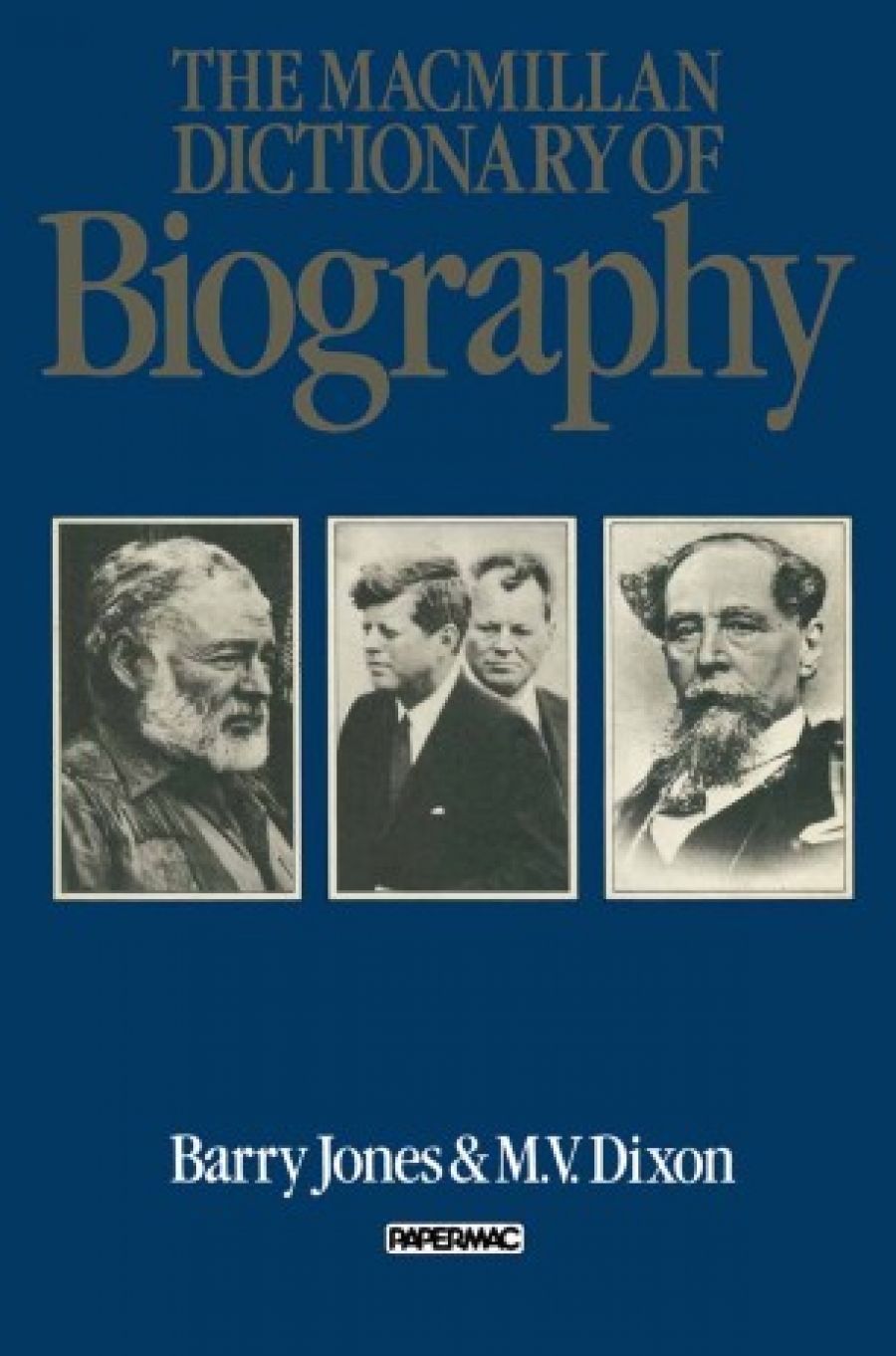
- Free Article: No
- Contents Category: Literary Studies
- Review Article: Yes
- Online Only: No
- Custom Highlight Text:
Ah, unblissful ignorance. Having recently travelled through part of the Eyre Peninsula, I wish that I had known more about Edward John Eyre, English explorer and administrator.
- Book 1 Title: The Macmillan Dictionary of Biography
- Book 1 Biblio: Macmillan Australia, 917 pp, $49.95 hb
For the browser, or the inveterate if unsystematic enthusiast, Eyre occurs between Hubert and Jan van Eyck, the Flemish painters, and Ezekiel the Hebrew prophet, who, like Hubert van Eyck, is little known.
Picking through the Dictionary, I looked up local heroes such as Rupert Murdoch, only to find that the Sunday Times is missing from the list of sheets he owns in London and the Chicago Sun-Times only gets half its name. And now he has sold it! But at least he is there, unlike the newspaper tycoon, the late Axel Springer, whose dominance of the West German press goes unmentioned.
As with volumes of Who’s Who, you could play all day the game of who’s in and who’s not. Better, I think, to enjoy the information, such as that Tz’u Hsi, the dowager empress of China who lived from 1835 to 1908, was a striking beauty who became concubine of a weak and dissolute emperor. She liked to be designated ‘Motherly Auspicious Orthodox Heaven-Blest Prosperous All-Nourishing Brightly-Manifest Calm Sedate Perfect Long-Lived Respectful Reverend Worshipful Illustrious Exalted Empress Dowager’.
Among the 7,500 entries in the book, the Popes are different, of course. Leo I (‘the Great’) did much to establish the primacy of Rome and his resolute bearing persuaded Attila the Hun to spare Rome. The Vandals, unfortunately, were not so pliable: they sacked Rome.
The Dictionary’s success is assured. The first 3,000 copies have sold out and another 2,000 are to be published.
In all of this, there is the saga of the book itself. When he began work on it, Barry Jones was a draftsman in the Victorian Titles Office. Back then, in 1954, fame as a quiz whizz and prominence as Minister for Science lay ahead. This Who’s Who of 2,500 years, with its 7,500 names, was to almost sink beneath mistakes and mix-ups. Its publication was started by a foreign firm and then stopped. The first contract was signed in 1961. No fewer than twenty-seven specialist editors worked on it. Eight years later, the galley proofs arrived. There were inexplicable deletions. Beethoven, Confucius, and Homer had been dropped, perhaps because they didn’t ever appear at Lord’s.
Understandably, negotiations with that publisher broke down. In 1978, Macmillan in London took it up on behalf of Jones and the estate of M.V. Dixon, one of the previous publisher’s early editors, who had proofed his last page. To murmurs of approval from the Times Literary Supplement, the dictionary hit the streets in 198l. But only in England. When Jones saw it he found 400 names missing and 5,000 significant errors. He protested, asked for a disclaimer and interfered with its intended publication in the United States.
From August 198l to February 1983, it was rewritten and corrected. About 400 new biographies were added, bringing the word count to 250,000. For instance, Jones trimmed the Mary Queen of Scots entry and enlarged Mao’s. New subjects, such as Vietnam’s political leaders, were added. Now we can have the results of this saga. For the curious, Napoleon scores the longest entry, followed by Abraham Lincoln, Christ, Hitler, Rembrandt, Julius Caesar, and Horatio Nelson.
The Americans and the British are about to receive the benefits of this highly opinionated scholarship. I hope they appreciate it.


Comments powered by CComment